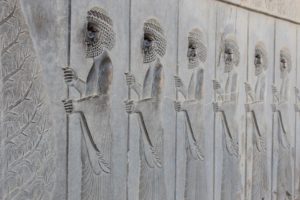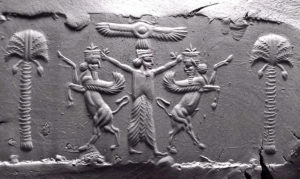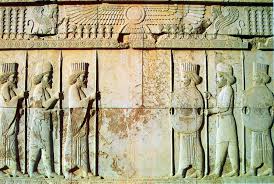Here is some information on the Traditions and Culture of Ancient Persia
Persian civilization was established by the great Achaemenid kings. While Aramaic was used mostly in the kingdom, Old Persian was the official language. Darius, I organized the empire, rewrote the legal code, fortified and reorganized the military and standardized weights and measures.
Ancient Persian Economy
While he was a Zoroastrian, he held a policy of religious tolerance and did not allow the use of slaves. It wasn’t until 522 B.C. that the Persian Empire became unified. The emperor Darius accomplished the real unification of this empire. Darius set up a government that was then used as a template for later rulers.

He then divided the Persian Empire into provinces; a government official called a satrap headed each of these provinces. According to the economy and the wealth of each province, determined how much taxes would cost for that year.
Achaemenian Period
In the Achaemenian period (550-330 B.C.) a unified style of art emerged. Luxurious works of decorative art were produced. The Achaemenids evolved a monumental style in which relief sculpture is used as an adjunct to massive architectural complexes. Remains of great palaces reveal plans that characteristically show great columned audience halls.

The major language in Iran, former Persia, is Farsi. It is a branch of the Indo-Iranian languages which is a group of the Indo- European languages. Aside from Iran, Farsi is spoken in Afghanistan, Tajikistan and the Pamirs Mountains. In keeping their native tongue, Persians expanded the nature of Islam from a religion with primary Arabic origins to a more encompassing world religion.
Persian Empire Religion
Prior to the foundation of Islam in Iran, Persians are noted for the development of one of the oldest monotheistic religions, Zoroastrianism. In this religion, there is one “Lord Wisdom”, known as Ahura Mazda. Also important to the religion is the concept of the nature of good (Senta Mainyu) and evil (Angra Mainyu).

New mothers and pregnant women received higher rations and sons were clearly preferred over daughters. If they delivered boys both the mother and the nurse or the physician received higher rations. The extra payments were given out for one month only. Consistently mothers of boys received twice the amount compared to mothers of baby girls.
Ancient Persian Culture Facts
There is no evidence of infanticide for girls as the number of births of male children only slightly exceeds the number of girls born. The official calendar of Iran is the Persian solar calendar, and the first day of the Persian new year is the 1st of Farvardin, and this day is called Norouz, meaning New Day.
The Culture of Ancient Persia
In the Persian solar calendar, there are 12 months, the first 6 months have 31 days, and the second 6 months have 30 days, except the last month which has 29 days, but has 30 days only in leap years. In the Gregorian solar calendar, the Norouz corresponds to March 21 of every year. I hope you found this information on ancient Persian culture interesting.